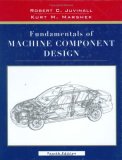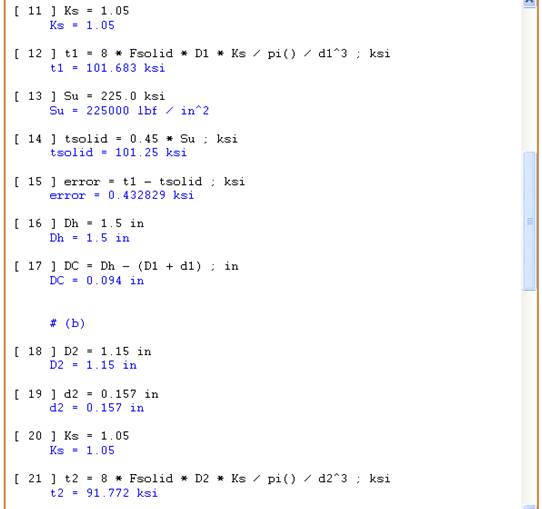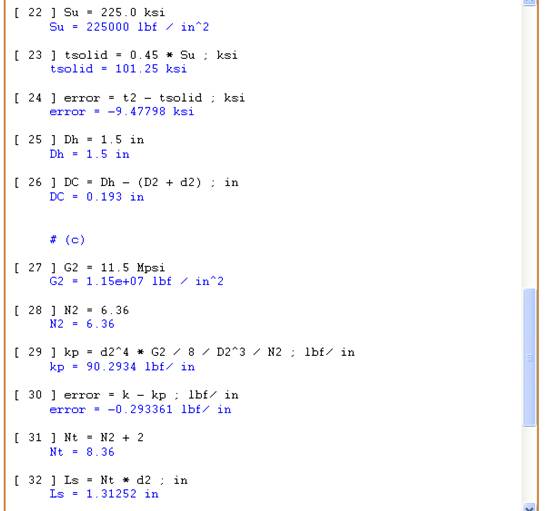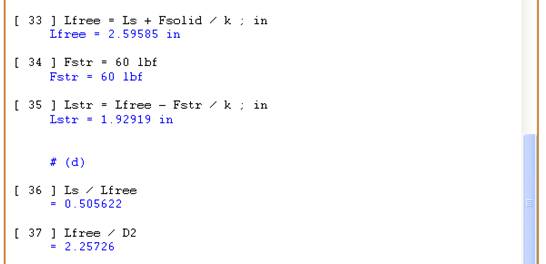Author's Homepage: Kurt M. Marshek
Chapter 12: Springs
"Springs are elastics member that exert forces, or torques, and absorb energy, which is usually stored and later released. Springs are usually, but not necessarily, made of metal. Plastics can be used when loads are light. Modern structural composites are being introduced for some applications requiring minimum spring mass. Blocks of rubber often constitute springs, as in bumpers and in vibration isolation mountings of various machines such as electric motors and internal combustion engines. Pneumatics springs of various types take advantage of the elastic compressibility of gases, as compressed air in automotive air shocks and as hermetically sealed high-pressure nitrogen gas in the hydropneumatics suspensions of French Citroen automobiles. For applications required compact springs providing very large forces with small deflections, hydraulic springs have probed effective. These work on the basis of the slight compressibility of liquids, as indicated by their bulk modulus of elasticity. Product cost can sometimes be reduced by designing he required elasticity into other parts, rather than making those parts rigid and adding a separate spring."



 or by typing Shift Enter.
or by typing Shift Enter.


